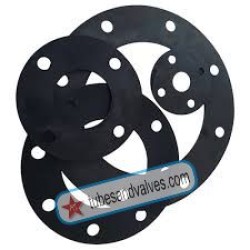Introduction to Rubber Gasket Materials and Applications
A rubber gasket is a part or seal made of a versatile material that is used to prevent the leakage of liquids and gases. This versatile material can withstand a wide range of temperatures and pressures and often is used in the sealing of pumps, engines, and other machines, as well as in plumbing applications. Gaskets made from rubber provide superior strength and durability, enabling them to be used in a variety of environments. This article will look at the types of rubber gasket materials and the different applications for them.
Types of Rubber Gasket Materials
There are several different types of rubber gasket materials to choose from, each with its own unique qualities and characteristics. The most commonly used type is EPDM (Ethylene Propylene Diene Monomer) rubber, which is a highly durable, flexible rubber with excellent resistance to temperatures and ozone. EPDM is often used in automotive and aviation applications, as well as in the construction of roofs, door and window seals, and gaskets. Neoprene is another type of rubber used in gaskets, which offers good resistance to oils, fuels, and other solvents. It also has good flexibility, making it a great choice for seating or cushioning in appliances and equipment. Silicone rubber, another popular choice, is known for its superior flexibility, excellent thermal and electrical insulation, and resistance to heat and weathering. Nitrile rubber gaskets are highly resistant to oils, hydrocarbons, and other organic solvents, and provide superior performance when exposed to a variety of temperatures.
Rubber Gasket Applications
Rubber gaskets are used in a variety of applications, from sealing pipes, valves, and flanges in plumbing systems, to protecting machine components from corrosion and vibration. Gaskets also can be used for insulation, noise insulation, and vibration damped surfaces to reduce wear and tear on machinery over time. In automotive settings, rubber gaskets are used to reduce air and exhaust leaks, and to help protect engines against oil and fuel leakage. Many industrial settings also rely on rubber gaskets to create an airtight seal between two objects. In some cases, rubber gaskets are used to create temporary seals that can be easily replaced or adjusted when needed.
Advantages of Rubber Gaskets
Rubber gaskets offer several advantages, including high durability and long-lasting performance. They are also highly versatile and can be used in a variety of environments and applications. Rubber gaskets also provide superior protection against water, fuel, and oil leaks, as well as chemical wear and tear. Furthermore, rubber gaskets are relatively inexpensive and easy to install.
Conclusion
Rubber gaskets are an essential component in a variety of industries, providing superior sealing capabilities in a diverse range of applications. Rubber gaskets offer superior strength, durability, and flexibility, as well as cost-effectiveness. As such, they are an excellent choice for those looking to protect equipment and maintain a tight seal in any environment.
FAQs for Rubber Gasket
FAQs for Rubber Gasket
What is a rubber gasket?
A rubber gasket is a mechanical seal that is used to prevent leakage between two surfaces. It is made of rubber material and is designed to fit between two surfaces to create a tight seal.
What are the different types of rubber gaskets?
There are several types of












































